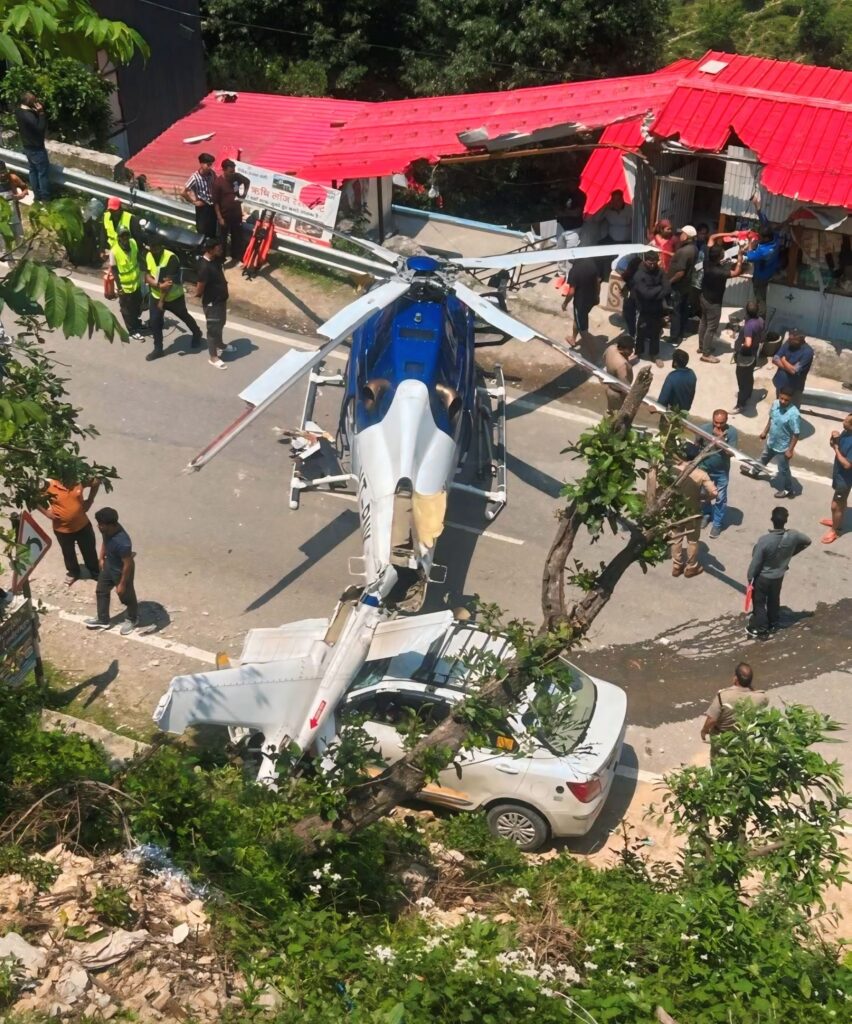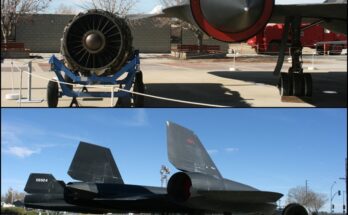
On 7 June 2025, a helicopter operated by Kestrel Aviation Private Limited en route to the sacred town of Kedarnath in Uttarakhand made a hard, unplanned landing on a main roadway near the Sirsi helipad in the Rudraprayag district.
What happened
The aircraft, identified as an AW119 registered VT-RNK, departed from the Badasu (also called Sirsi or Sersi) helipad at 12:52 PM with five passengers aboard, all pilgrims bound for Kedarnath. Shortly after take-off, the pilot reported a malfunction with the collective control—the lever that controls the main rotor blade pitch which in turn governs lift. Responding rapidly, the pilot elected to perform a controlled force landing on a nearby highway rather than proceed to the helipad.
During the landing, the tail portion of the helicopter broke off and struck a parked car adjacent to the road. While the five passengers were unharmed, the pilot sustained minor injuries and was taken to hospital for evaluation. Authorities confirmed the incident has been reported to the Directorate General of Civil Aviation (DGCA), and that regular helicopter shuttle services along the route were not disrupted.
Context & significance
The Kedarnath route is part of the popular pilgrimage circuit, often operated by helicopter due to the challenging terrain and limited road access. This incident was reported as the fourth helicopter mishap on the “Char Dham” route in roughly 30 days.
An investigation by aviation authorities noted several broader issues: rapid and unpredictable weather in the Himalayan region, limited dedicated air-traffic control in this corridor, and the pressure on operators to maintain high flight volumes during the pilgrimage season. The DGCA’s initial assessment flagged the Kestrel incident as stemming from a technical snag rather than weather or pilot error — though full investigation remains ongoing.
Key take-aways
- Safety under challenging terrain: Flying in narrow valleys, high altitude and weather-sensitive settings means small technical issues can escalate quickly.
- Technical reliability is critical: In this case, the collective control malfunction forced the pilot into a non-standard landing scenario.
- Preparedness saved lives: The pilot’s quick decision to land on a road instead of attempting to return to helipad likely prevented greater damage or injury.
- Need for systemic review: The clustering of multiple incidents in a short span on the same route suggests the need for enhanced oversight, stricter safety standards and possibly reduced flight quotas during peak pilgrimage pressure.
What happens next
The DGCA will conduct a full investigation into the incident, examining maintenance records of the helicopter, pilot flight hours, route-specific risk factors and operational oversight by Kestrel Aviation. The state aviation authority, the Uttarakhand Civil Aviation Development Authority (UCADA), has been tasked to coordinate a review of helipad infrastructure, route traffic management and emergency-landing options.
All passengers and operators on the Kedarnath route should be alerted that incidents such as this highlight the inherent risks, and ensure that flights are only undertaken with full compliance to safety checks and only under suitable weather conditions.


